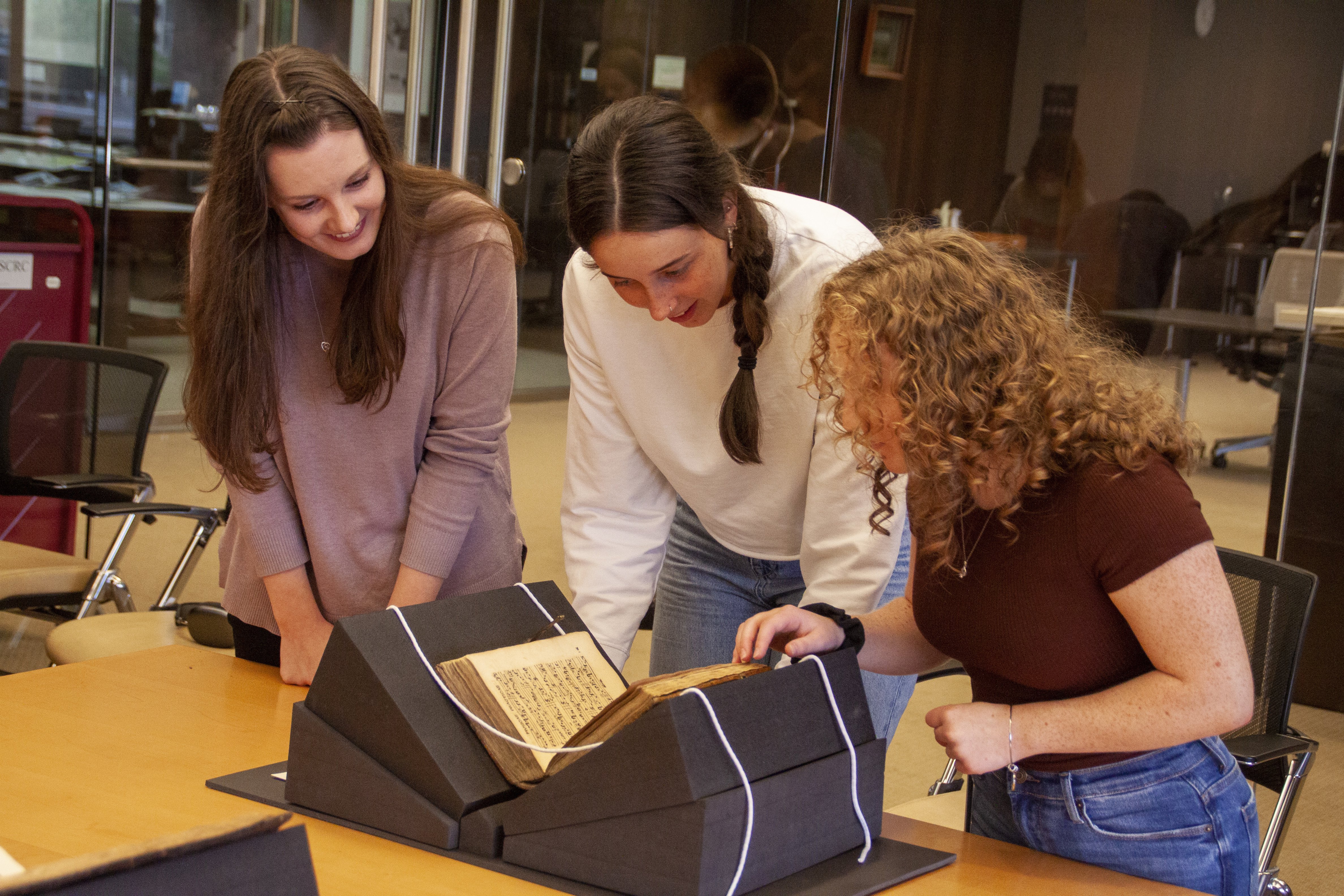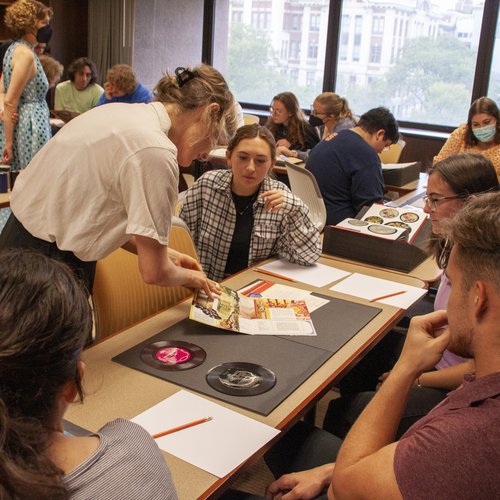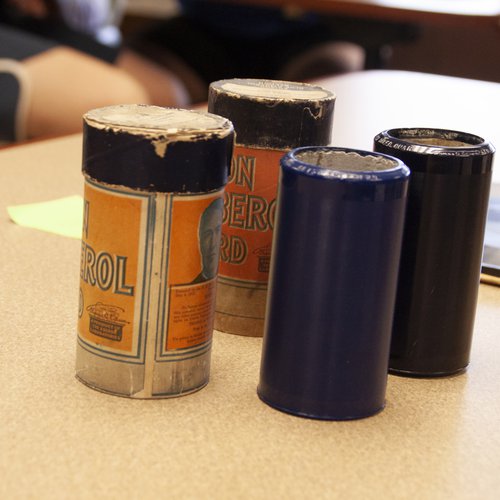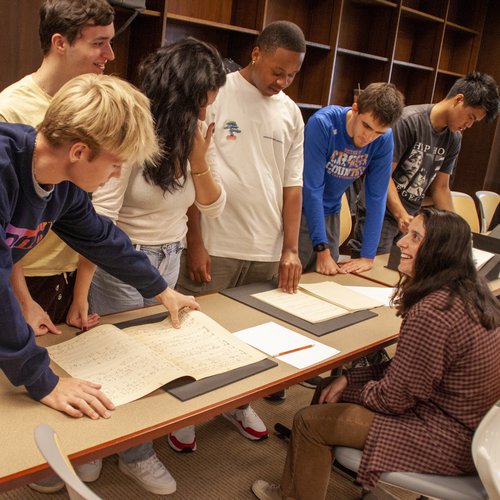Cool Class: European Music Before 1800 (HOM/MHL 267)
Music history students visit SCRC for a hands-on research lesson.

Students enrolled in the Department of Art and Music Histories’ European Music Before 1800 class recently had the unique opportunity to visit Syracuse University’s Special Collections Research Center (SCRC) to learn about their music-related collections. During the session, students interacted with items from the SCRC archives dating back hundreds of years and talked with curators about how SCRC can be a valuable resource in their research. Read more about their visit in the Cool Class profile below.
Class Name: European Music Before 1800 (HOM/MHL 267)
Professor: Amanda Eubanks Winkler, professor and department chair of art and music histories
Class description: Students in HOM/MHL 267 learn the cultural and philosophical contexts of European music before 1800. Students consider a range of questions: What did this music mean to people when it was originally composed? How did this music participate in and reflect European culture? Why do we still study this music? What might it reveal about the power structures of the past and present? Why have some composers and types of music been excluded from the “canon” (collection of influential composers and works)? This course helps students formulate answers to these questions through extensive listening, targeted readings, creative projects and musical analysis.
Students who should enroll: HOM/MHL 267 includes students from across the University, although anyone who takes the class must be able to read music. A&S majors include music history and cultures, psychology, women’s and gender studies, communication sciences and disorders, and biology. VPA majors include sound recording technology, performance, music industry and music education.
What students learned at SCRC: Students were acquainted with music-related collections, particularly those from the University’s Belfer audio archive, which includes over 500,000 items ranging from the earliest experimental recordings on tinfoil to modern digital media. They also viewed and handled European music books and manuscripts from the medieval and early modern period.
The benefits of hands-on learning: The visit to SCRC provided students an opportunity to make a tangible connection to material discussed in class. During a session led by SCRC curator Jana Rosinski, they were introduced to different types of sound recording media including Edison cylinders, diamond discs and flexidiscs. Rosinski also pulled a range of 19th and 20th century objects from their music collections to talk about the range of materials available to students in the SCRC.
During a second session, curator Daniel Sarmiento offered a presentation about SCRC’s services and discussed with students the difference between primary and secondary sources. Curator Irina Savinetskaya then spoke with the class about the research center’s medieval and early modern musical collections. Students interacted with a very large elaborately illuminated choir book (the Syracuse Gradual), which they had learned about in class. They also saw a range of printed musical material, dating from the early modern period. They discussed the different ways books were used, for example how singers would stand around the choir book to perform and how people wrote notes in the margins.

SCRC curator Jana Rosinski talks with students about sound recording media from the research center’s collection.

Students from Amanda Eubanks Winkler’s European Music Before 1800 class take a closer look at books from the research center’s medieval and early modern musical collections.

Edison cylinders from the SCRC archives. These cylinders are an example of the earliest commercial medium for recording and reproducing sound.

A student examines an Edison cylinder record case from the SCRC collection.

Students from HOM/MHL 267 discuss the origins of a piece of sheet music from SCRC’s archive.
